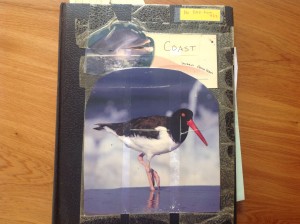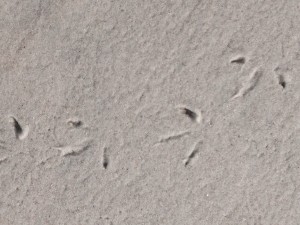 The writing of Coming to Pass: Florida’s Islands in a Gulf of Change began on October 22, 2007, when I inscribed a fat black journal with a single word–COAST–and then cut out pictures to decorate it.
The writing of Coming to Pass: Florida’s Islands in a Gulf of Change began on October 22, 2007, when I inscribed a fat black journal with a single word–COAST–and then cut out pictures to decorate it.
I didn’t know what this book would become back then. In 2007, I was trying to reconcile my roles. Mother and stepmother to three sons growing out and away. Daughter of an aging father needing a good deal of my help. And lover of an earth increasingly precious, and increasingly under assault.
The wonderful Montana writer, David James Duncan, helped me enormously. “At the core of every piece of work is the question,” he writes. “You may not answer it, but you are always moving towards it. Your ability to articulate a question is what will make for a good writing. It’ll be a trail marker.”
In my commonplace book I began to articulate what I wanted to learn: What is the nature of this coast, geological, biological, human/cultural? How were the islands formed, and how are they changing? What makes this place unique, and what special things live here? And, most important of all, was there ever a time when people lived inside the shape of this landscape, in reciprocity, not simply on top of it? What would that be like?
My new book Coming to Pass is built upon the whole of my life in relationship with saltwater shores. It is also a response to living at a pivotal time on our planet. When I was born in the 1950s, there were but 300 ppm carbon dioxide in Earth’s atmosphere. Over the course of my life—and yours—that number has risen to an increasingly catastrophic 400 ppm.
“All sorrows can be borne if you put them into a story, or tell a story about them,” wrote Isak Dinesen, author of Out of Africa and Babette’s Feast. And Dinesen’s stories, says native American writer Scott Momaday, verify that literature is, after all, nothing so much as profound consolation. That sounded good to me. I wanted to be consoled. I wanted to dedicate myself to writing. And I wanted to spend more time–days and weeks and months–at the coast.
I copied these bits of advice and many more onto the first pages of my coast journal, which I kept in the fashion of a commonplace book (as taught to me by the gifted writer and teacher Sheila Ortiz Taylor). I began to record interviews with scientists, jot notes on the tides, sketch snowy plovers, copy passages from the myriads of experts whom we really ought to pay attention to, like Orrin Pilkey and Cornelia Dean, and from poets and sages like Henry Beston, John Hay, and Leslie Marmon Silko.
You can see that the direction of my course was heavily influenced by others before me. But gradually, I allowed my own body and my own senses to listen to what the coast might want to be said directly. I offered myself as a conduit. More and more space in the journal became devoted to me–the listener–and to the voices of the birds.
“Align me, O Earth, with your purposes,” became my daily prayer. It still is.
 I lay my words, my tracks, on this paper, next to the tracks of rare shorebirds, and side by side with the paw prints of St. Vincent’s she-wolf and her pup on that island. Our tracks say: We were here, and we found it beautiful beyond all imagining. And that is the story of how Coming to Pass came to pass.
I lay my words, my tracks, on this paper, next to the tracks of rare shorebirds, and side by side with the paw prints of St. Vincent’s she-wolf and her pup on that island. Our tracks say: We were here, and we found it beautiful beyond all imagining. And that is the story of how Coming to Pass came to pass.
Share On:

Susan’s writings make me think of the Hemingway title, “True At First Light.” As I’ve gotten to know her over the past few years, everything she does is reflected in her description of the process of gathering and writing this book. Can’t wait to read it.
Takes one to know one, my birding buddy, Mike!
You have inspired me to go back to keeping a journal. I have gotten out of the habit, but I love the idea of keeping a particular journal dedicated to one theme. Really looking forward to seeing the publication of your journal in book form.
Many thanks Susan for taking us with you on this journey. Sharing your creative process along with your explorations of Florida’s coastal ecosystems is a valuable contribution for all of us! Love you, your books and your spirit!
You’re gathering writers and philosophers and scientists and life in such a useful way. M. Scott Momaday, yes.
Mary Jane! Thank you.
Takes one to know one, Annie.
I’d love to hear how your theme evolves, Ann.
Dear Sue,
Your writing is so beautiful. I am glad that you appreciate the wisdom of others and that you recognize the power of your own inner wisdom as you are “gradually allowing your own body and your own senses to listen to what the coast might want to be said directly.” You have so much to teach us as a wonderful advocate for the coast. Thank you, Sue. Bless you. Candace